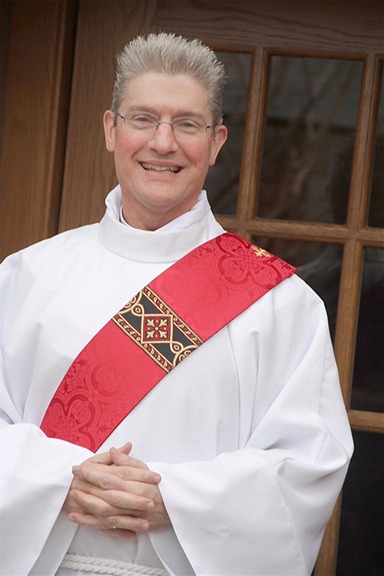Deacon Reflection: I Have a Question

By the Rev. Larry Conrad, Jr.
I remember that dreaded question. I was warned I would be asked it over and over and over again. I probably delayed entertaining the idea of entering the discernment process for too many years because of that question.
When I did enter the process, I was not disappointed. My priest at the time asked it, then the parish discernment committee, then the Commission on Ministry for the Diaconate, and even the Standing Committee wanted to know: What can you do as a deacon that you cannot do as a lay person? What makes that such a dreaded question is the answer: Nothing. Well, almost nothing—certainly not “something” that would warrant spending three years of my life in a discernment process.
In the three years since my ordination, I have thought a lot about that question. The answer for me is not found in liturgy, for almost everything deacons do in liturgy, according to the rubrics, can be done by the celebrant, presider, priest or even a lay person. We are a sacramental church, but deacons cannot fully administer any of the sacraments, save maybe unction, though that is probably debatable by some. Sacraments, in any event, are not our role; the role of administering sacraments belongs to the priest and bishop.
And so, I go about my business visiting the sick, especially those in hospice. I assist the priest and the bishop in worship. I, along with a host of angels from St. Mary’s, High Point, buy gifts and throw a Christmas party for children of prison inmates each year. I hug, console and love God’s people as best I can. All of these acts can be carried out by a lay person.
But, somehow, it is different.
For me to begin to understand why that is so, I must turn the tables and remember a couple of times over the years when I was a patient in the hospital. Folks would visit: family, friends, coworkers. I distinctly remember how very different it was when a “collar” walked through the door. To me, as a patient, it was moving and powerful, no matter how short the visit. I do not know why. Maybe it was, rightly or wrongly, a feeling of closeness to God represented by the cleric.
I am, therefore, keenly aware of what I may represent in my work and witness to others, and so I reconcile it in this way. All ordained folks in our tradition have a common denominator, and that common denominator is the altar. Our chief weekly activity together is Sunday worship, and the focal point of our worship is the altar. Because it easily can be construed as a tomb, especially an empty tomb, the altar is a powerful symbol of death and resurrection. It is literally on top of this empty tomb—this promise of our own empty tomb—that we celebrate and draw the very source of life we need to sustain us on this side of Heaven. And it’s not just for ourselves. We go on to proclaim to all of God’s people that in the midst of everything commanding our collective attention and all that is commanding our individual attentions, there is a promise of resurrected life in Jesus.
It is from the altar at which I serve on Sundays that my ministry emanates. When I leave the building to visit a parishioner in the hospital, someone in hospice or a stranger in distress, or even when I have a casual conversation with someone in line at the grocery store, it is done out of my service at the altar. It is done out of an admission of death in this life and a promise of a resurrected life to come.
What can you do as a Deacon that you cannot do as a lay person? It turns out the answer is EVERYTHING!
The Rev. Larry Conrad, Jr., serves as the deacon at St. Mary's, High Point.
Tags: Deacon Reflections / Discernment
